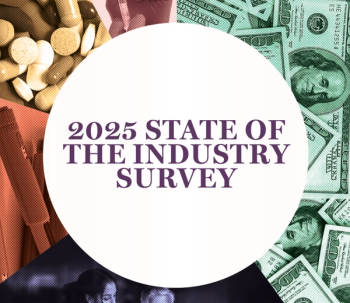
More Employers Plan to Shift Health Costs to Workers in 2026 as Benefits Grow More Expensive
Employers increasingly shift health benefit costs to workers in 2026, while prioritizing mental health and innovative affordability strategies.
In the third year of a rapid health benefit cost increase,
Shared July 16, the survey revealed that 51% of large employers—those with 500 or more employees—are likely or very likely to make plan design changes next year that would raise deductibles or out-of-pocket maximums. That’s an increase from 45% in last year’s survey.
The survey gathered responses from 711 U.S.-based organizations, including 504 with 500 or more employees and 207 with fewer than 500.
Conducted from April 8 to April 25, 2025, the survey aimed to uncover how employers are addressing rising costs while still offering benefits that are affordable, inclusive and supportive of employee well-being.
Employers expect the average cost of health benefits to increase by 5.8% in 2025, after rising 4.5% in 2024.
Prescription drug costs, in particular, rose sharply by 8% in 2024, driven largely by specialty drugs and increased use of glucagon-like peptide 1 (GLP-1) medications for diabetes and obesity. While most employers cover GLP-1 drugs for diabetes, fewer than half (44%) cover those approved for weight loss.
“While the trend over the past couple of years has been to add coverage for GLP-1s approved for weight loss, some employers facing large cost increases in 2026 may feel this coverage is out of reach,” Alysha Fluno, pharmacy innovation leader for Mercer, said in a news release. “Employers are weighing the immediate costs of covering these drugs against the potential for generating savings down the road once their workforce’s health improves.”
GLP-1 drugs are a key reason why 77% of survey respondents ranked managing the cost of pharmacy benefits as extremely or very important. In response, 61% of large employers are now exploring alternatives to standard pharmacy benefit contracts to gain more transparency on drug costs and services.
However, many employers are hesitant to shift too much cost to workers.
About half said they will try to avoid cost-shifting in 2026, even as financial pressures mount. To address affordability in other ways, 12% of employers offer free employee-only coverage in at least one medical plan and 37% provide a plan with minimal cost-sharing when care is needed, such as a copay-based option. Some also offer larger health savings account (HSA) contributions to low-income workers or low-interest loans to help cover medical expenses.
One employer approach is to offer “variable copay” plans, which include no or low deductibles and fixed copays for services based on provider fees. These copays are disclosed up front, giving employees the chance to choose lower-cost providers.
Currently, just 6% of large employers offer these plans, but among those that do, 28% of their employees chose to enroll in them in 2025. In total, 35% of large employers plan to offer some type of non-traditional medical plan option in 2026.
“Employers project average health benefit costs to grow by nearly 6% this year, and 2026 may be even more challenging from a cost perspective,” Ed Lehman, the U.S. health & benefits leader at Mercer, said in the release. “While short-term cost containment actions might be needed to address current budget realities, we also see some employers using longer-term strategies, such as offering narrow network plans, that emphasize high-quality, high-value care.”
Beyond cost-cutting, employers are continuing to prioritize mental health and employee well-being.
It was found that over 75% of large employers will offer digital mental health resources in 2026, such as mindfulness and meditation apps or cognitive behavioral therapy tools. Half plan to offer in-person or live virtual sessions like group training and coaching.
Training managers to recognize signs of mental health challenges is also gaining traction.
In fact, nearly 40% of all large employers—and 60% of those with 20,000 or more workers—now train managers to identify struggling employees and connect them with resources. These efforts reflect growing concern: 45% of employees say they feel stressed most days at work.
The 2026 Mercer survey reflects a shift in employer strategy. As costs rise, companies are not only adjusting plan design but also focusing on innovative ways to improve affordability, value and resilience across a diverse workforce. Strategies include disrupting cost growth, addressing different dimensions of affordability and building inclusive benefits to support employee resilience.
Newsletter
Get the latest industry news, event updates, and more from Managed healthcare Executive.





















































